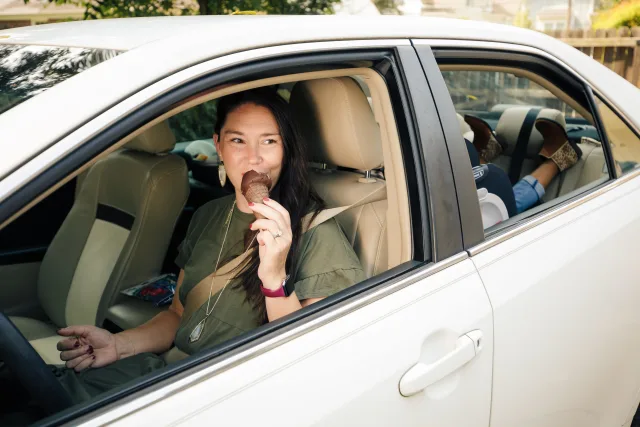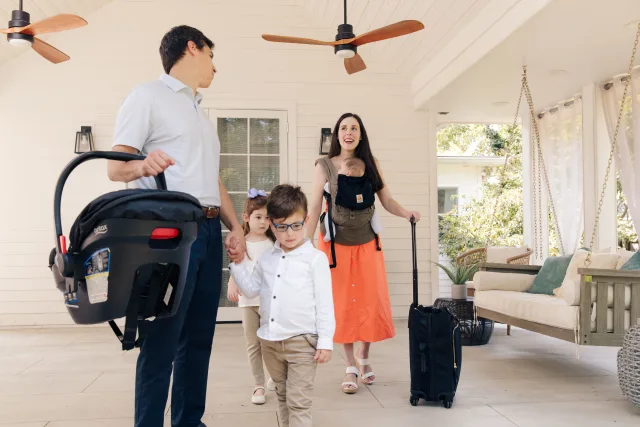Car accidents are extremely common. In fact, most drivers in their lifetime have at least experienced a fender bender, if not a major collision. Every year, there are over 2 million people who get injured in car accidents, and 37,000 people die. To stay safe on the road, it’s best to know what you’re up against—what are some of the most common reasons for a deadly crash?
35% of fatal accidents occur because of impaired driving. We often think of this as drunk driving, and that’s true. Drunk driving accounts for over 11,000 deaths a year! However, there are other forms of impaired driving like drowsy driving that make our roadways unsafe. The AAA Foundation for Traffic Safety estimates that one in six fatal crashes were due to drowsy driving. In fact, this is such a prevalent problem that the National Sleep Foundation instituted a Drowsy Driving Prevention Week in order to educate all drivers of the dangers of falling asleep at the wheel.
In a car crash, an object (car, body, insides of body) must be stopped by something. The force used to stop those objects is not just about the speed the vehicle is traveling but about the weight of the object. In one single crash, all 3 of these collisions happen-vehicular, human and internal. When we understand “the why” behind keeping our kids (and ourselves) safe in the car, “the how” becomes all the more clear as to the importance of getting it right!
It is so important to stay alert and focused when you’re driving your car. This will save lives and protect you and your family from serious injury. There are ways to prevent drowsy driving and reduce the risk of a collision, and that’s what we’re covering today!
In this post, we break down the dangers of driving drowsy and discuss how to prevent it from happening at all. Here’s what you need to know about drowsy driving:
Why Is Drowsy Driving Dangerous?
Drowsy driving is considered just as dangerous as driving drunk. Wow! That may sound extreme, but it’s true. When you’re tired, you become mentally impaired just like if you had a few drinks (or a lot of drinks.) Your vision and other senses can be compromised and your reaction time drastically slows.
Additionally, your judgment and attentiveness worsen when you’re drowsy, much like drunkenness. When this happens, you can take unnecessary risks, speed, slide out of your lane, and miss important things on the road.
Tired drivers also experience “microsleeps,” which is more often referred to as “nodding off.” When you’re doing this, you’re completely impaired, even if it’s just for a few seconds. But at a high rate of speed, your car can travel over 150 yards while you quickly shut down and shoot back up. A lot can happen in those 150 yards!
Needless to say, driving while drowsy is a big problem. As a driver, it’s important you take steps to prevent drowsy driving and stay alert at all times when you’re behind the wheel.
What Is Drowsy Driving?
When you operate a vehicle while experiencing extreme fatigue or while actively falling asleep, you’re drowsy driving. This usually happens because you didn’t get enough sleep the night before, or because you have an untreated sleeping disorder. When someone drives while feeling extremely sleepy, they can no longer safely operate the vehicle.
At the very least, lethargy is a distraction. At its worst, drowsy driving impairs your vision and causes you to nod off. In order to fight drowsy driving, know the warning signs and make a plan for prevention.
Signs Of Drowsy Driving
Difficulty staying in your lane
If you find yourself swerving into other lanes, it’s time to take a break and stop driving. This could lead to fatal crashes.
Driving onto rumble strips
If you’re traveling in the right lane or left lane, and you keep swerving onto the rumble strips, it’s time to stop driving and get some rest.
Missing turns and exits
If your mind isn’t clear enough to pay attention to where you are supposed to be going, this can lead you to getting lost or worse.
Frequent blinking
Eyelids getting heavy? Time to pull over before you find yourself falling asleep behind the wheel.
“Highway Hypnosis” or forgetting parts of the trip
If you’re becoming mindless while traveling, and forgetting parts of your trip, this is a sign that you need to stop driving and rest up for safety’s sake to avoid drowsy driving crashes.
What Causes Drowsy Driving
Sleep deprivation
We know this can be especially true for new moms. If you need to be driving during the newborn baby stage, try your best to work out a system with your partner or other support systems to try to get some healthy sleep.
Sleep disorders
According to the Centers for Disease Control and Prevention (CDC), around 70 million Americans have a sleep disorder. Talk to your doctor about how to drive safely with certain disorders.
Medications
Some medications have side effects that include drowsiness. Talk to your doctor about driving if you are on a medication that may cause you to be drowsy.
Alcohol
Avoid drinking alcohol if you plan on driving. According to the National Highway Traffic Safety Administration, about one third of fatal car accidents involved impaired drivers.
Driving mid-afternoon or late at night when sleepiness peaks
Plan your travel schedule accordingly to avoid driving during your peak drowsy times. Read more here.
Driving for long periods
When planning a road trip, it is imperative that you plan your drive time and stops to ensure breaks for you/other drivers.
Working odd hours
If you work a job with odd hours (especially if you find yourself on a 24 hour shift!), always have a plan in place for safely getting yourself home.
The Dangers Of Drowsy Driving
Get lost or run late.
If you’re driving while drowsy, it’s easy to miss traffic signs and other landmarks. After a while, you might find you’re lost or you’ve taken the wrong exit. Now, you’ll be running late and frustrated while being drowsy, which is a dangerous combination.
Citations for reckless driving.
Drowsy drivers often slide into the wrong lane, speed, and run stop signs/lights. These things are illegal, and you could easily receive a traffic ticket for your reckless driving. That’s one of the best-case scenarios, though, because these actions could also result in a deadly crash!
Miss dangers inside the car too.
When you’re driving drowsy and struggling to stay focused on the road, you could miss the dangers that are happening in the car. Your attention is so divided and your senses are so impaired, that you may not see something risky happening in your own car. Maybe one of your children has gotten sick, maybe they’re choking on a snack, or maybe they just need you and you don’t realize it as you’re nodding off.
Make poor decisions in other poor conditions.
Driving in good conditions is tough. Driving drowsy in good conditions is tougher. However, driving drowsy in poor conditions is almost impossible. If you encounter fog, snow, rain, construction, or other environmental hazards, your impaired judgment and attentiveness could lead you to make poor decisions in these difficult circumstances.
Increase the risk of forgetting a child in the car.
This is every parent’s worst nightmare. However, one of the reasons kids are left in the car is due to a parent’s mental impairment. Often, it’s even exhaustion! If you arrive at your destination and doze off or rush inside to get some shut-eye, you may forget you have your child in the car. Staying alert and aware is vital for preventing deaths from children being left in vehicles.
Drift out of the lane.
When you’re driving drowsy, it’s easy to drift into the other lane. If you correct quickly, this may be no big deal. However, if you’re encountering oncoming traffic or you’re driving on a multi-lane highway, drifting out of your lane could lead to a deadly collision!
Collide at a high rate of speed.
Since drowsy drivers are prone to speeding, crashes resulting from sleepiness can be especially fatal. When your speed increases, the damage to your vehicle and danger to your body increases too. Driving while sleepy is incredibly dangerous, and you should do anything you can to prevent it.
How To Prevent Drowsy Driving
Don’t drink alcohol.
We already know we should avoid drinking and driving. Drinking alcohol can make sleepiness, reaction time, judgment, and attentiveness even worse. So, if you want to reduce your risk of getting in a fatal accident, avoid drinking alcohol before you go for a drive.
Avoid taking medications that make you drowsy.
Medications can be another cause of drowsiness. If you’re considering taking medication before you drive, check the label first to ensure it won’t make you sleepy. Of course, if it’s a prescription medication you have to take, don’t skip it. However, you should find someone else to drive or drive with you.
Practice better sleep hygiene.
One of the key ways to avoid drowsy driving is to get better sleep! Practicing good sleep hygiene by getting enough hours of sleep each night, adding naps to your schedule, blocking blue light, reducing caffeine intake, and more can help you set your circadian rhythms. When your sleep hygiene improves, your sleep is more restorative and you’re less fatigued and more alert during the day—and while driving!
Schedule trips around your sleepy time.
Do you have a time of the day when you’re just exhausted? A lot of people do! Most people are at peak drowsy times between midnight – 6:00 am and midday between 1:00 pm – 4:00 pm. If you know you get really tired in that mid-afternoon slot, try not to schedule yourself to be driving at that time!
If you work odd hours, you might have issues of fatigue at different times of the day. Often, shift workers have irregular sleep patterns that can lead to extreme sleepiness at normally active parts of the day. Be extra cautious if you work irregular shifts, as the risk of drowsy driving is even greater with you. Don’t drive when you know you’ll be tired, even if that means missing an event or taking a nap in your car before heading home late at night.
Discuss suspected sleeping disorders with your doctor.
If you have any signs of narcolepsy, insomnia, restless leg syndrome, or sleep apnea, talk to your doctor. All of these sleeping disorders can disrupt your internal rhythms and make it difficult to stay awake when it’s important. By getting properly treated for your potential disorder, you could save lives!
Take breaks on long trips.
If you’re going on a long road trip, make sure you plan plenty of breaks to rest, reset, and stretch! This is not only important for you as a driver, but it’s important for your infants and children too. It’s good for everyone to get out and move around (and maybe even take a quick nap.)
Manage your mental and physical health.
A lot of things can cause exhaustion. It doesn’t always stem from getting poor sleep at night. Exhaustion and fatigue can be from lack of physical activity, poor diet, stress, and even depression. Make sure you’re taking care of yourself, so you can feel good and stay alert.
Listen to your body.
The best way to prevent drowsy driving is to listen to your body. If you’re struggling to keep your eyes open and it feels like you may fall asleep, make a new plan. Even if you have a travel schedule or have an important errand, never keep going if you feel like your ability to drive safely is in question. Pull over and take a nap. Reschedule. Book a hotel. NEVER drive drowsy.
Driving drowsy can be just as deadly as drunk driving.
Safety is the most important thing when you’re on the road. Driving while sleepy is incredibly dangerous for any drivers and passengers on the highway, including you and your family. Do your part to prevent drowsy driving and instead sleep when your body says to sleep!
For more vehicle safety tips, check out the Safe in the Seat blog! Our goal is to help educate parents on family vehicle safety to keep everyone safe in their seats—whether that be a car seat or a captain’s chair! If you have any questions or want to connect with us daily, don’t forget to follow our Instagram too!






